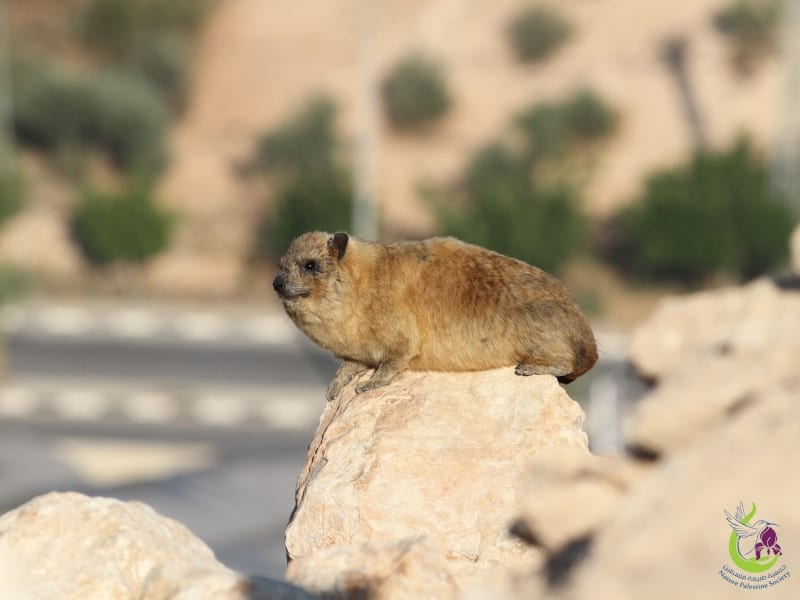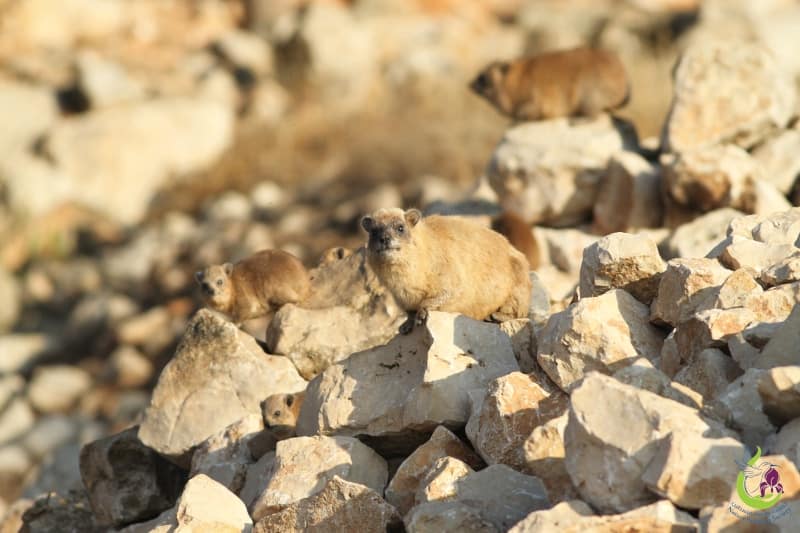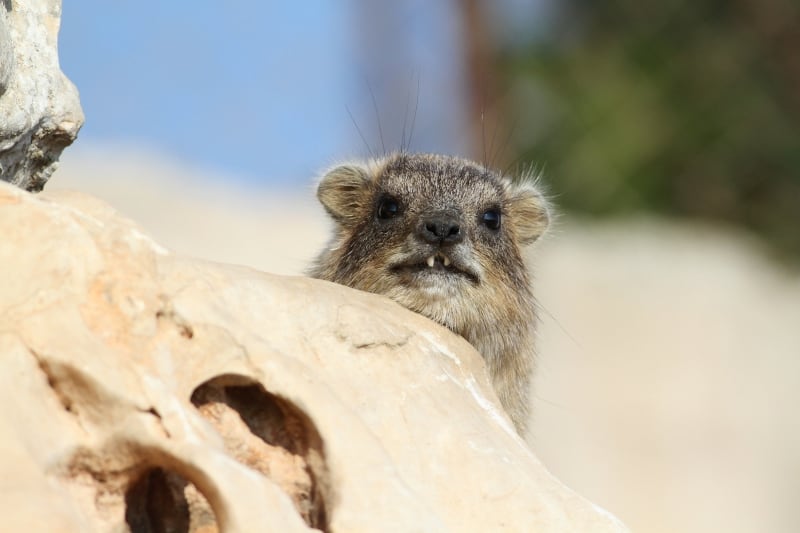Big city life: Why are hyraxes making Palestinian urban areas their new home?
Furry, gregarious and full of surprises – rock hyraxes are increasing in numbers outside their natural habitats in Palestine and across the Middle East. New research gives us a better understanding of how urbanization affects where hyraxes shelter and look for food.
By Ikram Salah
Although it resembles a marmot or a large guinea pig, the rock hyrax (Procavia capensis) is not a rodent. In fact, its closest living relatives are elephants and manatees. The highly social species, which lives in colonies of up to 50 individuals, is native to Africa and the Middle East.
Rock hyraxes prefer arid habitats with rocky crevices and cavities, in which they can shelter. However, it has been observed that hyraxes increasingly live in urban areas – including in the Palestinian West Bank.

What drives rock hyraxes into the city?
Partly, this development is due to urban expansion and the construction of infrastructure for new neighborhoods, which flattens topography and creates rock piles. Rock hyraxes use these rock piles as safe places for their dens and to venture from and return to when seeking food. Unfortunately, these dens also provide ideal breeding sites for disease vectors like sand flies.
As recently reported in the journal Mammalia, researchers from the Ben-Gurion University of Negev sought to better understand how rock hyraxes benefit from urbanization. They did so by studying the animals at four different sites with different degrees of urbanization, ranging from agricultural countryside to urban neighborhood. To pinpoint what it is about urbanization that most benefits hyraxes, the researchers related “hyrax activity density” (hyrax population size and feeding activity) to various environmental variables, including plant cover.
The locals found this amusing. “When I explained that the closest relatives to Rock hyraxes are elephants, they whispered to each other ‘What the heck is she talking about?’”, Dr. Ikram Salah, corresponding author of the study recounts.

Better water supply attracts hyraxes
The researchers found that most hyrax sightings occurred in the most urbanized sites. They attributed the hyraxes’ preference of the urban sites to the higher availability of water stemming from human activity.
They also discovered that, as the season progressed, hyrax numbers increased. The more the hyraxes successfully bred, the more mouths they had to feed. At some point, the hyraxes must have depleted the food close to their dens, which meant they had to forage farther and farther away from the safety of their dens while getting closer to humans.
“Urbanization creates conditions that attract hyraxes, promote their ecological success, and increase interactions between humans, hyraxes, and the diseases they carry”, the authors of the study conclude.
Learn more in the original article here:
